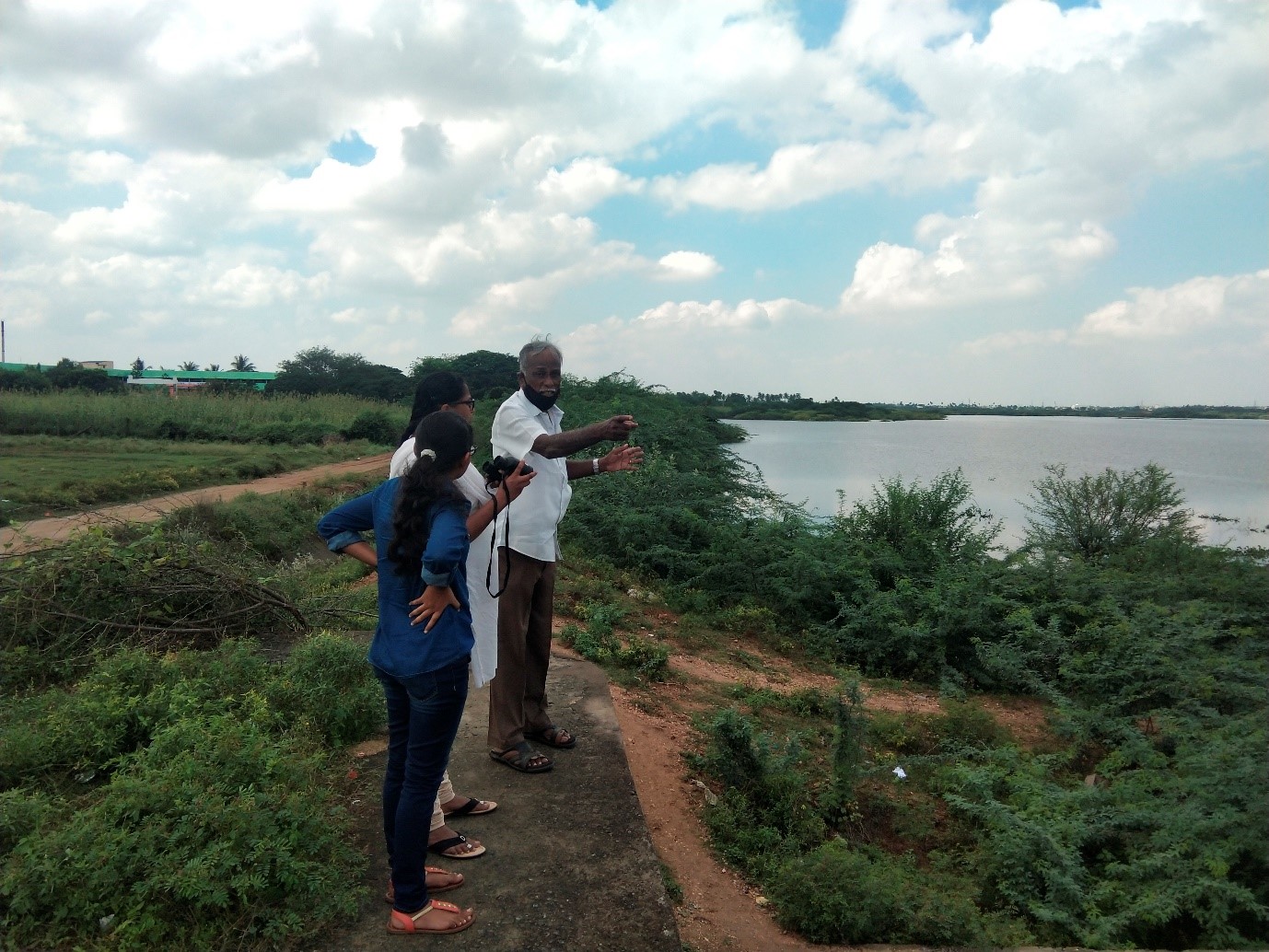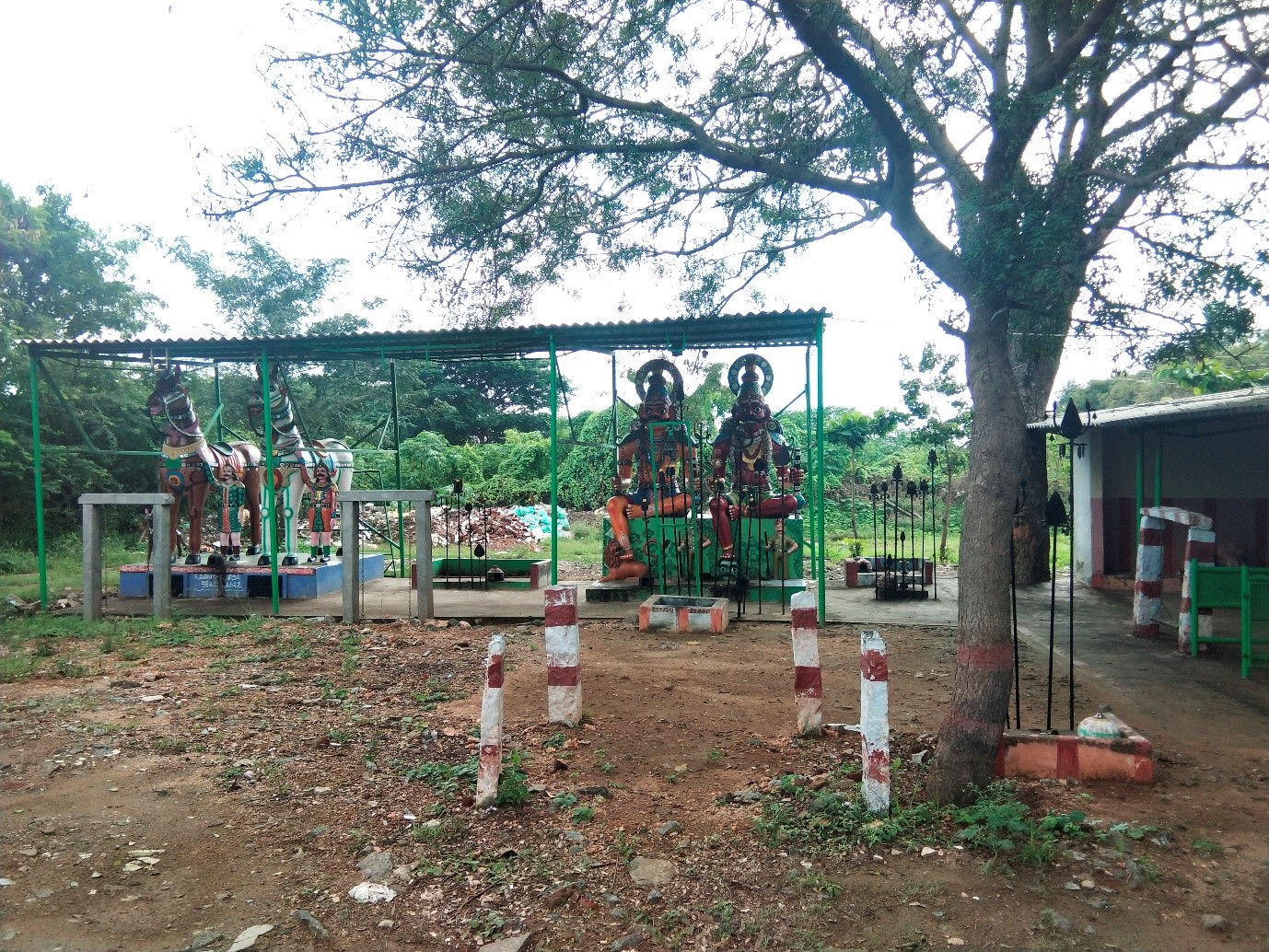
Kandasamy
Kandasamy is a author and farmer who lives in the Pullagoundaputhur village for more than 80 years.Kandasamy is an author of the book Velliyangri in which he writes about important people, mountains, rivers, canals, tribal people and their medicine in his and around villages of Coimbatore.
S
Shanmu
Kandhasamy
K
Kandhasamy
K
Kandhasamy
K
Kandhasamy
K
S
Shanmu
Kandhasamy
K
S
Shanmu
Kandhasamy
K
S
Shanmu
Kandhasamy
K
Kandhasamy (After 6.30 mins)
K
Kandhasamy
K
Kandhasamy
K
S
Shanmu | Researcher
Kandhasamy
K
Kandhasamy
K
S
Shanmu
Kandhasamy
K
Kandhasamy
K
Kandhasamy
K
S
Shanmu
Kandhasamy
K

Devarmalai Temple Tank Thamarai kulum, Karur
The priest of the Narrashima temple in Devarmalai shares information about the historical temple.
S
Shanmu
Priest of the temple
D
S
Shanmu
Priest of the temple
D
S
Shanmu
Priest of the temple
D
S
Shanmu

Priest of the temple

D
S
Shanmu
Priest of the temple
D

Senthamiltheni Tamil literary Scholar, Coimbatore
Senthamiltheni is a Tamil literary scholar and film director and shares details about water bodies in the Tamil Classic literature.
S
Shanmu
Senthamiltheni
Poet sirpi Balasubramanian would mention as follows
“Let the dams break/shatter
Rivers flow with running water”
These lines provide the ivory of constructing dams in a mountainous landscape which would affect the turbulence and flow of the river.
In the Chola period, Kallanai was constructed because the region was “Plains” or “Marudham”. Barring few benefits, technology has proved perilous to the natural course. The inherent technology that is innate in ourselves shall be existent forever. But under the pretext of technological advancements, humans create a rift with nature. This era of the Anthropocene should end for the sake of the healing and recreation of earth.
S
S
Shanmu
Senthamiltheni
“Kaveri” => “Ka” means garden
“viri” means expanse
“Mukoodar pallu” gives nuances about the lives and attachment of Tamil people towards nature.
S
S
Shanmu
Senthamiltheni
S

Aarumugam, Tiruppur
Arumugam was born and brought up in a village in Triuppur. Currently he lives in Triuppur city. He is an environmental activist and has been working with local NGOs to rejuvenate the tanks in the Tiruppur city.
Shanmu and Arumugam @ Nanjaraya kulam
S
Shanmu

Aarumugam
A
Aarumugam
A
Aarumugam
A
S
Shanmu
Aarumugam
A
Aarumugam

A
Aarumugam
A
Shanmu and Arumugam @ Samalapuram tank
(While Shanmu and Arumugam visited Samalapuram tank, they met fishermen who had taken the tank on contract for fishing from Triuppur corporation)
S
Shanmu

Fisherman
F
S
Shanmu
Fisherman
F
S
Shanmu
Arumugam
A
S
Shanmu
Arumugam
A
S
Shanmu
Shanmu and Arumugam @ Moolaikulam
Arumugam

Noyyal river is the source for this lake. River Noyyal has around 23 check dams. After constructing a check dam, the water will be diverted to a nearby lake. This has been the 100 years old tradition since the chola period. This water management system is a significant feat of Tongu cholas. This lake is also known as Mooli kulam or Moolai kulam. The name pertains to its location at the corner side of the area.
A
Arumugam
A
Arumugam

A
Shanmu and Arumugam @collectorate office
Arumugam


A
Shanmu and Arumugam @ Thamarai kulum
S
Shanmu

Arumugam
A
S
Shanmu
Aarumugam
A
Shanmu and Arumugam @ Chinnandipalayam kulum
S
Shanmu

Aarumugam
A
S
Shanmu
Aarumugam
A
S
Shanmu
Aarumugam
A
S
Shanmu

C R Elangovan, Coimbatore
C R Elangovan is a researcher, historian and author of Siruvani Koimbatorin Kudineer (சிறுவாணி கோயம்புத்தூரின் குடிநீர்) (Siruvani Drinking Water of Coimbatore).
S
Shanmu
Elangovan
- Increase in demand for resources
- Rapid Urbanization and gradual industrialization
- Improved water resources.
E
Elangovan
E
Elangovan
E
Elangovan
E
Elangovan
E
Elangovan
E
S
Shanmu
Elangovan
E
Elangovan
E
Elangovan
E
Elangovan
E
Elangovan
E
S
Shanmu
Elangovan
E
S
Shanmu
Elangovan
E

Periyasamy
Periyasamy who lives in Karur talks about the water issues and famine in Karur. He is a farmer and doing business in agriculture related products.
S
Shanmu
Periyasamy
P
S
Shanmu
Periyasamy
P
Periyasamy
P
S
Shanmu
Periasamy
P

Veerappan, Karur
Veerapan was born and brought up in a village Anaipalayam near Karur. He is a farmer and shares about the water issues in his village.
S
Shanmu
Veerappan
V
Veerappan
Since the British raj, Anaipalay dam has been called by different names. In Karur, there’s a clear understanding of the process of water sharing. People agreed to let water in once every 15 days. This demanded digging wells. Because wells were the store houses which would provide water during the dry days. But the advent of borewells deteriorated the underground water level.
V
Veerappan
V
S
Shanmu
Veerappan
V
Veerappan
V
S
Shanmu
Veerappan
V

Saravanan and village people, Panjapatti, Karur
Saravanan and others from the Pasumai Boomi Arakkattali, Panjapatti talk about bringing water to the historical tank in their village. This Panjapatti tank is the third largest tank in Tamil Nadu and has been dry for 16 years due to lack of rain and mismanagement. The village people expressed their dismay and discontentment as the government has not taken efforts and adequate steps to bring the water to the tank.
S
Shanmu

Saravanan
S
S
Shanmu


Saravanan
S
S
Shanmu
Saravanan
S
S
Shanmu
Village People
V
Village People
V
S
Shanmu

Swaminthan, Kurichi Kulam Padukappu Iyakkam NGO, Coimbatore
Kurichi Kulum in the outskirt of Coimbatore is spread around 328 acres. A few years ago it was functioning only as a drainage and filled with water hyacinth and plant debris and city wastes. The NGO Kurichi Kulum Padukappu Iyakkam who took the massive drives to remove all the wastes and cleaned the tank with help of other NGOs, PWD and local people. The founding president S M Swaminathan shares this experience with me.
S
Shanmu
Swaminthan
S
Swaminthan
S
Swaminthan
S
Swaminthan
S
S
Shanmu
Swaminthan
S
S
Shanmu
Swaminthan
S
S
Shanmu
Swaminthan
S
S
Shanmu
Oosai Kalidas
O
Oosai Kalidas
O
Oosai Kalidas
O
Oosai Kalidas
O
Oosai Kalidas
O
Oosai Kalidas
O
Oosai Kalidas
O
Oosai Kalidas
- To renovate the channels connecting the tanks and rivers.
- To desilt the tanks(sources)
- To avert the mixing of sewage (untreated) into rivers.
O
Oosai Kalidas
O
Oosai Kalidas
O
Oosai Kalidas
O
Oosai Kalidas
O
Oosai Kalidas
O
Oosai Kalidas
O
Oosai Kalidas
- Tanks serves as primary source for rivers.
- With an adequate rainfall of 700 mm, tanks would be the appropriate catchment area. They can be storehouse awing rainy season. Later through channels and check dams, this water flows into rivers during off seasons.
- Tanks act as aquifers recharging the underground water levels.
- Tanks shall give birth to a new ecosystem which accommodate may migratory species.
O
Oosai Kalidas
O
Oosai Kalidas
O
Oosai Kalidas
Rainwater harvesting
Industrial water harvesting sewage treatment
O
S
Shanmu
Oosai Kalidas
O
S
Shanmu
Oosai Kalidas
O

Periyakanan, Viraliyur, Coimbatore
Periyakanan is more than 80 years old and he lives in the village Viraliyur which is located near Velliyangri hills (Western gate), Coimbatore. He recollects his memory about the water history, scarcity and famine in the past.
S
Shanmu
Periyakanan
P
S
Shanmu
Periyakanan
“Aiyaiyoo Congress eh what’s the price of rice?
Oh Ruined Congress eh what’s the price of pulses?” This song was quite at that time. During the same tenure, we travelled alongside 200 bullock carts to Vellingiri foothills via Semmedu to reach Kallipalayam to location where food grains was distributed.
P
Periyakanan
P
Periyakanan
P
Periyakanan
P
Periyakanan
P
S
Shanmu
Periyakanan
P
Periyakanan
P
Periyakanan
P
Periyakanan
P
Periyakanan
P
Periyakanan
P
Periyakanan
P
S
Shanmu
Periyakanan
P
S
Shanmu